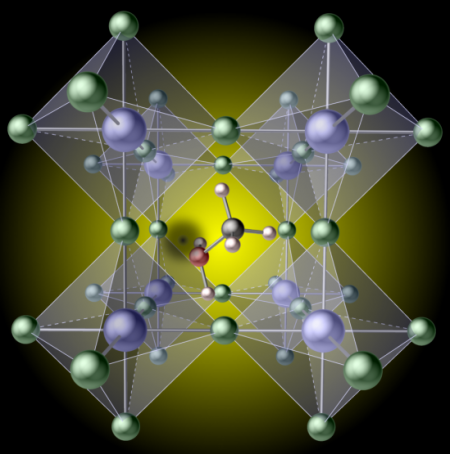The past year has seen much progress in the development of perovskite solar cells, with scientists working out new ways to delve deep within the materials and understand the interactions between particles, and how these serve to limit the conversion efficiency or cause rapid degradation.
And there is growing evidence that hydrogen bonds have a key role in limiting the formation of defects and ensuring stability and performance. New research led by the University of California Santa Barbara offers further evidence of this, finding that ‘missing’ hydrogen atoms, or vacancies, can occur deep within the material, causing dramatic reductions in cell efficiency.
To gain these insights, the group headed to the National Energy Research Scientific Computing Center (NERSC)’s Cori supercomputer to model the path of electrons through a perovskite solar cell, using a technique called density functional theory (DFT). “DFT is a very powerful way to treat the behavior of electrons in a material quantum-mechanically,” said UCSB professor Chris Van de Walle. “It makes the problem feasible; but it still requires a lot of central processing unit (CPU) time.”
Organic molecule
The group’s findings are described in full in the paper Minimizing hydrogen vacancies to enable highly efficient hybrid perovskites, published in Nature Materials. The group first modeled methylammonium-lead-iodide; one of the best performing and most commonly researched materials for perovskite solar cells.
Popular content
The modeling demonstrated that hydrogen vacancies can form at high densities within this material, limiting the cell performance by causing high levels of non-radiative recombination. Meanwhile, modeling of another common perovskite material in solar cell research – formamidinum-lead-iodide, showed far lower levels of hydrogen vacancy formation, and lower non-radiative recombination.
With this knowledge, the researchers theorize that focus on perovskites based on formamidinum, rather than methylammonium, should be the direction of future research. “Our study unveils the critical but overlooked role of hydrogen vacancies in hybrid perovskites and rationalizes why formamidinum is essential for realizing high efficiency in hybrid perovskite solar cells,” the group states. “Minimizing the incorporation of hydrogen vacancies is key to enabling the best performance of hybrid perovskites.”
This content is protected by copyright and may not be reused. If you want to cooperate with us and would like to reuse some of our content, please contact: editors@pv-magazine.com.



By submitting this form you agree to pv magazine using your data for the purposes of publishing your comment.
Your personal data will only be disclosed or otherwise transmitted to third parties for the purposes of spam filtering or if this is necessary for technical maintenance of the website. Any other transfer to third parties will not take place unless this is justified on the basis of applicable data protection regulations or if pv magazine is legally obliged to do so.
You may revoke this consent at any time with effect for the future, in which case your personal data will be deleted immediately. Otherwise, your data will be deleted if pv magazine has processed your request or the purpose of data storage is fulfilled.
Further information on data privacy can be found in our Data Protection Policy.